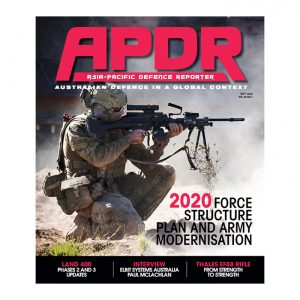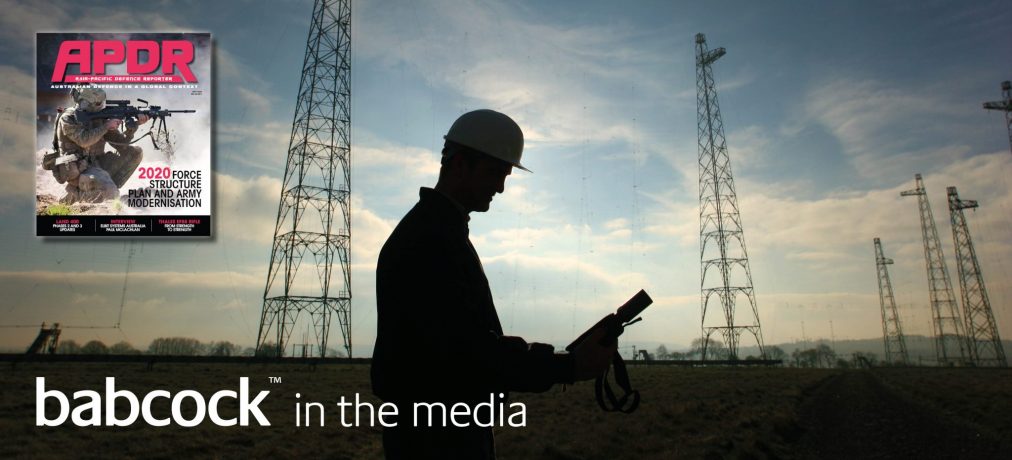Babcock was recently awarded the contract to provide enhanced High Frequency (HF) radio communications to the New Zealand Defence Force by 2023, together with a second contract to deliver through-life-support for the twenty years to follow.
The following article was published in Asia-Pacific Defence Reporter for their September 2020 edition (Vol.46 No.7). You can access the full issue here.
The NZDF communicates from New Zealand to its deployed ships, land forces and aircraft, using high frequency (HF) radio or satellite communications. High frequency radio is the primary communications medium for smaller ships and aircraft, also for deployed forces when satellite is unavailable. Critically, high frequency radio enables communication below 60 degrees South in the Southern Ocean where communication with military and other platforms as well as New Zealand’s Scott Base in Antarctica, via satellite, is difficult or unavailable in this whole area.
In December 2018 Defence Minister Ron Mark tabled Cabinet Papers for a project whose scope will:
- Upgrade land-based infrastructure in New Zealand (including transmitters, receivers, and other equipment);
- Update the Joint Remote-Control System to control all NZDF HF equipment;
- Introduce a frequency management prediction system;
- Introduce Automatic Link Establishment/ and Management;
- Integrate the new HF System into the NZDF’s network command and control system; and
- Install Government Furnished Cryptographic Equipment.
A contract was subsequently signed by New Zealand’s Ministry of Defence with Babcock New Zealand on 27 February 2020 to replace the NZDF’s fixed high frequency radio capability, and provide through life support.
In June 2020, Rohde & Schwarz Australasia became Babcock’s sub-contractor to provide R&S®M3SR Series4100 high frequency (HF) radios, high power amplifiers (5 kW and 10 kW), spares and support for the New Zealand program. According to the company, the upgrades are expected to be fully operational by August 2023.
“Rohde & Schwarz welcomes this contract in New Zealand, having a longstanding history in HF communications,” commented Gareth Evans, managing director Rohde & Schwarz (Australia). “Since HF wideband technology drives the need for high power systems, the company is now offering 5 kW and 10 kW amplifiers backed by decades of experience in the transmitter business. We will fully support Babcock Australasia in implementing and operating this modern communications solution.”
BUSINESS CASE FOR THE HF RADIO UPGRADE
The current fixed high frequency radio system was installed in the 1980s and a limited upgrade was undertaken in 2005. As a result, the system is becoming more difficult to maintain. As the Cabinet Papers state ‘Without the high frequency radio system, the Defence Force will be unable to communicate in a timely manner between deployed force elements and New Zealand in some circumstances. This may result in compromises to personnel safety, military operations, and an inability to perform some of the Government’s mandated objectives for the Defence Force, as outlined in the Strategic Defence Policy Statement.’
The NZDF’s business needs can be simply expressed as retaining the ability to communicate with ships and aircraft close to New Zealand, retaining global communications when satellite is unavailable, and improving efficiency and effectiveness of the high frequency radio capability.
Satellite communications may be unavailable due to geography – satellites are ineffective below 60 degrees South – natural phenomena such as solar storms and high sea states preventing satellite tracking – or due to denial or degradation of service.
NZDF MILITARY COMMUNICATIONS
Government Cabinet Papers, released under a Freedom of Information Request although heavily redacted, provided the following information. ‘The NZDF uses communications across all its military operations, for both tactical and strategic purposes. Communications networks include satellite, high frequency radio, cable, and cellular radio to provide voice and data. Cable, and to a lesser extent cellular radio, cannot be used from deployed ships and aircraft.
‘The Defence Force is currently completing an update of its satellite communications capability, including acquiring access to the United States Wideband Global Satellite Communications system.
‘High frequency radio systems complement satellite or terrestrial communications systems. It helps manage the risk of communications disruption or failure. The Defence Force uses high frequency radio for medium and short distance communications servicing areas up to the east coast of Australia and mainland New Zealand and its coastal areas respectively; to provide communications below 60 degrees South due to a lack of satellite coverage below that mark; as a primary communications channel for smaller platforms such as helicopters and inshore patrol vessels with limited or no satellite capability; and as an alternate communications channel for deployed force elements, located up to 10,000km from New Zealand, when satellite service is limited or unavailable.’
NZDF’s requirement for reliable communications from New Zealand over less than 6,200 km are to have 95% circuit availability, 6,200km – 10,000 km to have 90% circuit availability and 80% circuit availability for distances greater than that.
The existing fixed HF radio network comprises equipment at six locations. There are two in the Auckland area – Papakura Military Camp and Dale Road, Seagrove; two in the lower North Island at Waiouru Military Camp and Naval Communications Station Irirangi, and two in the South Island at RNZAF Base Woodbourne and West Melton, near Christchurch.
The Cabinet Papers proposed reducing the sites to just two – Ohakea Air Force Base and Weedons communications site near Burnham Military Camp – with all relevant NZDF locations having sophisticated linkages to these two sites.
ROHDE & SCHWARZ M3SR SERIES4100 HF RADIOS
Rohde & Schwarz are providing the NZDF with a state-of-the-art generation of communications systems designed to take HF radio to the next level. The R&S®M3SR Series4100 HF radios are innovative, versatile software defined radios (SDR).
They support frequency hopping in all of the HF operating modes and include HF wideband functionality. This powerful radio platform can be extended at any time and is fully supportable through the Rohde & Schwarz (Australia) logistics hub in Wellington.
Software defined radios save and on logistics effort reduce operating costs. In particular, the costs of warehousing spare parts and of maintenance are reduced tremendously. Having fewer internal hardware components also helps to significantly boost the reliability when compared with conventional radios.
Wideband functionality, using a bandwidth of 24 or 48 kHz provides the high speeds necessarily to handle multiple information data types simultaneously and quickly.
Besides the existing HF in-house waveforms, the R&S® M3SR Series4100 will also support future waveforms that attain a suitable level of market acceptance and lead to international standards. A software update is all that is required.

This article was published in Asia-Pacific Defence Reporter for their September 2020 edition (Vol.46 No.7). You can access the full issue here.

